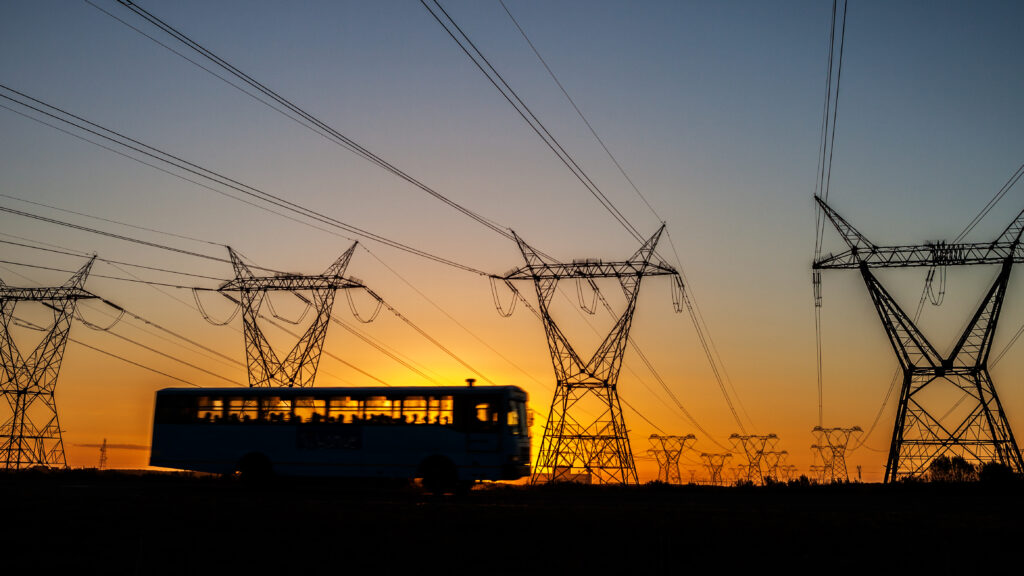Introduction
In the recent past, Kenya has seen increased investment in its electric mobility sector, a growth which is in tandem with the shift towards a greener economy and addressing the challenges posed by climate change. Electric mobility, also known as e-mobility, refers to the use of electric vehicles (EVs), as a cleaner and more efficient alternative to traditional internal combustion engine vehicles (ICEVs).
The increased use of EVs in Kenya helps the country comply with its international obligations set out under the Paris Agreement. Indeed, Kenya has focused on a shift towards more environmentally sustainable practices, including development of government policy to encourage investment in the same. For example, the National Climate Change Action Policy 2018-2022 includes measures aimed at reducing greenhouse gas (GHG) emissions and promoting sustainable development. It is notable, however, that there is no similar policy to encourage investment in the e-mobility sector.
Nonetheless, Kenya recently submitted its Nationally Determined Contribution (NDC) to the United Nations Framework Convention on Climate Change (UNFCCC) Secretariat on 28th December 2020, where the country committed to reducing GHG emissions by thirty two percent (32%), below business-as-usual levels by 2030.
Industrial Developments
Although the development of policies and regulations surrounding Kenya’s electric mobility sector is still in its nascent stages, the production and development of electric buses and motorcycles, charging infrastructure and technical standards has been catalysed by key partnerships in the sector.
One notable partnership is between Kenya Power and Lighting Company (KPLC) and Deutsche Gesellschaft fúr Internationale Zusammenarbeit (GIZ). In February 2023, the partnership hosted an e-mobility conference with the aim of developing a roadmap and consultative approach for electric motorisation in Kenya. KPLC has also expressed its intention to exploit one thousand one hundred megawatts (1,100 MW) off-peak load to kick-off Kenya’s transition to electric mobility.
BasiGo and Associated Vehicle Assemblers (AVA) are also in partnership, working together to build modern electric buses in Kenya. As at January 2023, AVA reported the completion of the assembly of fifteen (15) electric buses. The partnership has further set a target of producing over one thousand (1,000) electric buses within the next three (3) years, which target has in turn reportedly created more than three hundred (300) new manufacturing jobs, and additional jobs in charging, maintenance, and financial ecosystems to support the operation of EVs.
Additionally, private sector-led companies are quickly establishing charging points and battery-swapping stations to promote the growth of clean transportation. One such company is Ecobodaa, which is already testing fifty (50) electric motorcycles, with plans to expand to one thousand (1,000) motorcycles by the end of 2023. The motorcycles have a range of up to seventy kilometres (70 km) on a single charge and can be charged using solar power.
With the aim of reducing EV range anxiety, several companies are collaborating to establish charging infrastructure for EVs in Kenya with the aim of ensuring that EV users have reliable and easily accessible charging options. Various charging stations for EVs have been installed in several locations including the KenGen offices in Nairobi, Two Rivers Mall, Garden City Mall, The Hub Karen, the Kenya Ports Authority premises in Mombasa and Kisumu.
The Kenyan government has also taken steps to prioritize the electric mobility sector and introduced incentives to promote domestic production of EVs and their components. Among these incentives are tax exemptions for EV manufacturers and importers, as well as subsidies for the installation of charging infrastructure.
Notably, through Schedule 1 to the Excise Duty Act, 2015, the government has reduced the excise duty imposed on all vehicles which are fully electric powered, from twenty percent (20%) to ten per- cent (10%). Additionally, KPLC has proposed a special tariff for EV charging, being KES 17 per Kilowatt hour (KWh), which will be lower than the residential tariff.
Investors therefore have a plethora of investment opportunities in Kenya’s electric mobility sector, to aid not only in its growth but to also promote sustainable development. These opportunities include EV manufacturing, EV charging infrastructure development and EV battery manufacturing.
Challenges
Electric mobility is a promising solution for Kenya’s transportation sector, which is plagued by high fuel costs and air pollution. However, despite the benefits associated with electric mobility, there are significant challenges that must be addressed in order to achieve widespread adoption.
The need to develop a comprehensive legal framework will be indispensable towards the success of electric mobility in Kenya. For in- stance, in Norway, the comprehensive legal framework has not only made the country a global leader in electric mobility but has also created a predictable and stable environment for EV manufacturers and investors.
In Kenya, lack of a comprehensive legal framework governing the use of EVs creates uncertainty for investors and manufacturers with respect to the legal and regulatory risks involved in such investment, the supply chain for EVs and the regulatory requirements in the sector. Notably, the existing regulations and policies do not adequately address the unique characteristics of EVs, such as their charging infrastructure and battery management.
Limited charging infrastructure is another major barrier to the success of electric mobility in Kenya. Lack of a robust charging infra- structure limits the range, accessibility, and convenience of EVs. As a result, many potential EV consumers are hesitant to make the switch from traditional ICEVs.
Technical standards ensure that EVs are manufactured to a consistent level of quality and safety. The lack of appropriate and adequate technical standards therefore gives rise to the risk of substandard battery quality, which may undermine the safety and performance of EVs and pose a challenge to regulators to enforce and monitor compliance.
Moreover, without sufficient knowledge and understanding of the advantages of EVs, consumers may be hesitant to adopt the technology. As a result, EV manufacturers are finding it challenging to market their products to potential consumers. Limited public awareness may also hinder the government’s ability to create policies and initiatives that support the growth of electric mobility.
Additionally, the high import taxes on EVs in Kenya has a direct impact on the success of electric mobility. The twenty-five percent (25%) import duty raises the price of EVs above those of ICEVs. The price disparity hinders the widespread adoption of the EVs since they are more expensive, thereby making them less attractive.
The need to develop a comprehensive legal framework will be indispensable towards the success of electric mobility in Kenya.
Needless to state, the marked depreciation of the Kenyan Shilling has also affected the implementation of electric mobility as it has raised the cost of importing EVs and their components, including batteries, making them less affordable to Kenyan consumers. Additionally, the high cost of importation might affect the availability of spare parts and maintenance services for the EVs.
Recommendations
As the demand for cleaner and more sustainable transportation options continues to grow in Kenya, there is a pressing need to address the legal, technical, and economic challenges facing the adoption of electric mobility.
To promote the development of a robust electric mobility ecosystem in the country, it is crucial to adopt a range of strategies to help overcome these challenges. For instance, development of a comprehensive legal framework tackling the registration and licensing of EVs as well as the construction and operation of charging infrastructure and battery-swapping stations is encouraged. This is especially so because the construction of charging infrastructure requires the allocation of land for that purpose.
Additionally, to make EVs more affordable and competitive with ICEVs, as well as to encourage the development of charging infra- structure in the country, the government can offer tax incentives such as reduced or waived registration fees for EVs, income tax incentives for individuals who purchase or lease EVs, lowered or waived parking fees for EVs and tax credits or rebates for EV buyers to offset the cost of EVs.
Further, to foster public-private partnerships, the government can work with EV manufacturers, technology providers, and charging stations to accelerate the development of electric mobility infrastructure. This can be made possible by providing incentives such as tax breaks or subsidies for companies that invest in the sector. Additionally, the government can partner with private investors to finance the development of electric mobility infrastructure, with the former providing funding for electric mobility infrastructure projects, and the latter contributing technical expertise and finance.
In order to raise public awareness about the benefits of EVs, the government can also work with media outlets to increase the coverage of EVs and their benefits. This may include interviews with EV owners, feature stories on EVs, and coverage of events related to electric mobility. The government may also use social media outreach to raise awareness.
Conclusion
The implementation of electric mobility in Kenya presents a promising opportunity to reduce the country’s carbon footprint and dependence on fossil fuels, while simultaneously promoting economic growth and innovation. It also presents numerous opportunities in various sectors of the economy such as data protection and privacy, intellectual property, financial structuring, and regulatory compliance.
Despite facing several challenges, there is growing momentum towards the adoption of EVs in the country. With the right policies and continued investment, the government and private sector can work together to accelerate the development of electric mobility in Kenya and create a cleaner and more sustainable future.





